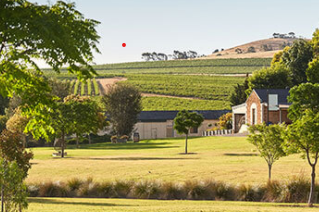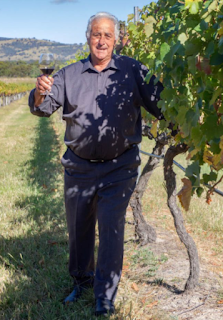
Patina's vineyard at Orange
When a
winemaker from the Orange region of central New South Wales meets one of their
counterparts from Queensland’s Granite Belt, one of the first questions likely
to be asked is ‘'How high are you?’’
No, it’s
not about the effects of non-medical use of cannabis or other illicit drugs, it’s
about the height of their vineyard.
It’s a bit
of a boasting game given that both are among the highest viticultural regions in
Australia, with many vineyards in Orange between 600m and 1100m above sea level
and most of those around the Granite Belt ranging from 700m to 1000m.
To say they
qualify as cool-climate areas is something of an understatement as both can
experience snow during winter and generally are a lot cooler than districts closer
to their respective coasts.
So if you
want to see what cool-climate wines are all about, seeking out some from the
Orange district is a good way to start.
One that is
particularly successful with chardonnays is Patina, established in 1999 by
Gerald Naef on the slopes of Mt Canobolas.
Gerald says
one benefit of higher-altitude vineyards is the high difference in day-night
temperatures. During the day the grapes accrue carbohydrates via photosynthesis
in the leaves, then at night during respiration the vine borrows back some of
these stores from the berries. The lower the nighttime temperature the less the
vine needs to borrow during respiration resulting in more intensity in the
grapes.
The result is more flavour concentration at lower alcohol levels, something evident in Patina’s latest release chardonnays, the 2019 Estate ($40) and 2018 Reserve ($60). They’re lovely examples of cooler-climate chardonnays that show concentration, complexity and elegance without being too big.
Patina is
not limited to chardonnay, however, with their pinot noir, cabernet sauvignon, riesling
and cabernet merlot definitely worth seeking out.
Nearby Bloodwood winery, established by Rhonda and Stephen Doyle in 1983, thus making it one of the oldest in the region, has been making rieslings for quite a few years but Stephen says they are still working out exactly what the best style for the vineyard is.
He know,
however, that riesling, regardless of the residual sugar content, should sit on
a knife’s edge between fruit and acidity. He’s been looking to build more texture
on the palate, usually be allowing the wine to sit for six months on fine lees.
The 2018
version ($32) is a lovely example of the
style, with citrus and floral characters balanced by mineral acidity. It’s
still a baby as a 2010 version tasted at the same time shows lovely citrus and
honey aged characters, still balanced by great acidity.
Find out more
about these wines and buy them at www.patinawines.com.au and www.bloodwood.biz












